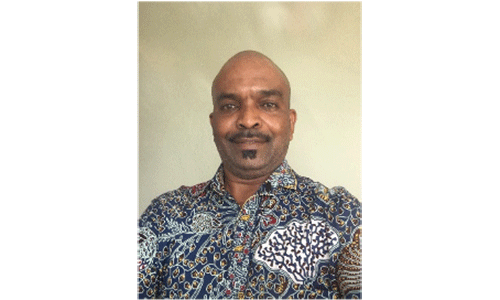The outbreak of the Covid-19 pandemic about two years ago reminded planners and all those involved in space production strategies to rethink their approaches.
As social distancing became one of the methods to combat or reduce the negative effects of the pandemic, public open spaces became important areas where people could escape to for a glimpse of fresh air, or to engage in some physical exercise activities to stay healthy. Unfortunately, in low-income areas, Covid-19 highlighted how the current planning practices overlooked the importance and role of public open spaces, and how indigenous knowledge systems (IKS) are highly invisible from the current spatial planning practices.
Prior to the pandemic, public open spaces, although a requirement of Namibian town panning schemes (now zoning schemes), were scantly provided in low-income and poorer sections of our urban areas.
Most of the public open spaces in these deprived areas turn out to be unusable (river courses, hills etc) or inappropriately located, and thus unreachable by the target community.
Moreover, the few available usable open spaces were, and are still, being threatened through appropriation by elite and private developers under the pretext of housing provision.
Reasons such as neglect, vandalism and lack of development budgets are equally being provided to get rid of potentially usable open spaces. A recent survey in the Havana formal/informal settlement revealed that a shortage of usable public open spaces has negative consequences on the everyday living of the residents.
Children end up covering longer distances in search of play areas, or have to opt for dumping and waste grounds as play areas. Parents have to, as a consequence, live with increased stress levels due to children wandering off their neighbourhoods to fairer areas where they end up being absorbed by unfortunate ills such as drug abuse.
Another observation from the residents is that in case where an open space is available, it is usually dominated by dominant groups or male sports such as football by the bigger boys, living the girl-child with no space to play.
These idling girls are then left with no option but to wander around the mushrooming shebeens in their areas, which lead to higher teenage pregnancy, alcohol abuse and school dropout rates. Another negative impact highlighted was the disappearance of cultural practices, which are important ingredients of the indigenous communities’ wellbeing and existence. The study reconfirmed the importance of cultural open spaces such as the olupale, sinyanga, omuvanda, soxa !ais, kgotla and others in the wellbeing of those communities.
The cultural spaces embrace the spirit of social cohesion in the communities. These spaces highlight the interconnectedness of people and nature, with the aim of achieving the wellbeing of all members present and their environment, in line with the Ubuntu principles (Murove 2009; Aluko 2018). Cultural open spaces perform as educational, environmental management and health centres in their own right. At these places, participation of all the members present to complete certain tasks is highly encouraged, something which current conventional collaborative planning approaches are failing to achieve in the low-income urban areas.
The urban planning practice in Namibia is thus invited to reflect on the importance of IKS in addressing some of the pressing urban problems being experienced in areas such as Havana in Windhoek. Pandemics, stress, alcohol abuse, climate change and other life-threatening issues could be properly discussed at such cultural spaces.
Furthermore, the residents stressed that the introduction of such spaces could contribute to the reduction of conflicts, not only among the residents themselves, but also between the residents and professionals such as planners, traffic officers and others. The residents are equally of the view that such open spaces will rescue some of the fast-dying traditions of the communities.
Nevertheless, the study observed some emergent, mostly rural practices, being revived in some parts of Windhoek, but under difficult conditions due to a lack of adequate open spaces, or rigid urban planning regulations.
Cultural practices, rich in IKS, such as oxungi (storytelling), oundano (plays), otjimukandi (wedding ceremonies) and omakura (age mates) gatherings, are some of the activities increasingly being observed in Windhoek.
The residents, being highly diverse, expressed high levels of a will-to-share these spaces with proper programmes and timetables.
They raised concerns that if not properly coordinated and planned, accessibility to such good intentions might be restricted to the richer sections of the communities, with the majority poor being excluded again.
This article is, therefore, a call to all space production role-players (town planners, architects, engineers, politicians, community and private developers) to rethink our spatial planning approaches. It is imperative that we start listening to the people on the ground, and start integrating the people’s aspirations in development plans.
This can only be successful if done in a balanced co-production approach, where the principle of equal partnership is applied. Emerging collaborative approaches between tertiary institutions, municipalities and low-income residents such as those experimented with in Gobabis, Karibib and other towns should be elevated and supported towards integration into urban and regional planning practices and policies. Moreover, such efforts should place IKS, of course separating the negative from the good practices, at the centre of spatial planning, if inclusive, sustainable and healthy cities are to be attained.
*Hungiree Wilson Billawer is a PhD holder in urban and regional planning from the University of the Free State (RSA), a spatial indigenous knowledge systems expert, and a community poet. Any constructive discussions on indigenous knowledge systems and the creation of inclusive, sustainable and healthy settlements can be forwarded to wbillawer@yahoo.com or via LinkedIn.


